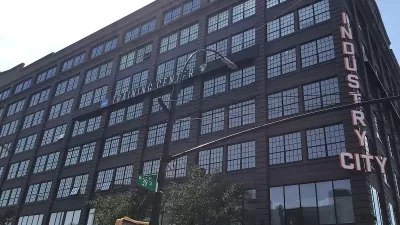The creator of "The Wire" talks to CityLab about "The Deuce," New York City in the 1970s, and how strategies for one town won't always work for another.

Until recently, most of David Simon’s literary and television projects have been based in America’s less-gentrified cities. "Homicide: Life on the Streets" and "The Wire" took place in Baltimore, "Treme" in New Orleans and "Show Me a Hero" in the rarely celebrated town of Yonkers.
His newest, "The Deuce," about the legalization and popularization of pornography, takes place largely in Midtown Manhattan in the early 1970s. It is resplendent with wardrobe and hairstyles true to the period, and it is a portrait of a Times Square that is virtually unrecognizable next to the current one.
Simon doesn't necessarily subscribe to the nostalgia for a seedier New York that is hard to avoid in the city, but neither does he see any lessons in urbanism. "New York’s future is not indicative of a resolution to America’s urban problems," Simon tells CityLab, "[it] has metrics that other cities can’t replicate economically or culturally."
More than new police tactics or social programs, the mayors that presided over the city during its most transformative year—he names Ed Koch and Rudy Guiliani—"were able to money the city again," Simon said, referencing Baltimore’s attempt to adopt "broken windows" policing.
Recognizing the cultural dilution that has come with a safer New York, Simon added, "Not that I’m rushing into Bubba Gump Shrimp in Times Square, but, hey, it’s tax base. I mean, I don’t mean to make fun. When stuff [like that] shows up in Baltimore, Maryland, I’m happy. I’ve watched my city lose 120,000 people. The idea that any business wants to come back in and start up—OK, welcome."
FULL STORY: CityLab

Alabama: Trump Terminates Settlements for Black Communities Harmed By Raw Sewage
Trump deemed the landmark civil rights agreement “illegal DEI and environmental justice policy.”

Planetizen Federal Action Tracker
A weekly monitor of how Trump’s orders and actions are impacting planners and planning in America.

Why Should We Subsidize Public Transportation?
Many public transit agencies face financial stress due to rising costs, declining fare revenue, and declining subsidies. Transit advocates must provide a strong business case for increasing public transit funding.

Understanding Road Diets
An explainer from Momentum highlights the advantages of reducing vehicle lanes in favor of more bike, transit, and pedestrian infrastructure.

New California Law Regulates Warehouse Pollution
A new law tightens building and emissions regulations for large distribution warehouses to mitigate air pollution and traffic in surrounding communities.

Phoenix Announces Opening Date for Light Rail Extension
The South Central extension will connect South Phoenix to downtown and other major hubs starting on June 7.
Urban Design for Planners 1: Software Tools
This six-course series explores essential urban design concepts using open source software and equips planners with the tools they need to participate fully in the urban design process.
Planning for Universal Design
Learn the tools for implementing Universal Design in planning regulations.
Caltrans
Smith Gee Studio
Institute for Housing and Urban Development Studies (IHS)
City of Grandview
Harvard GSD Executive Education
Toledo-Lucas County Plan Commissions
Salt Lake City
NYU Wagner Graduate School of Public Service





























